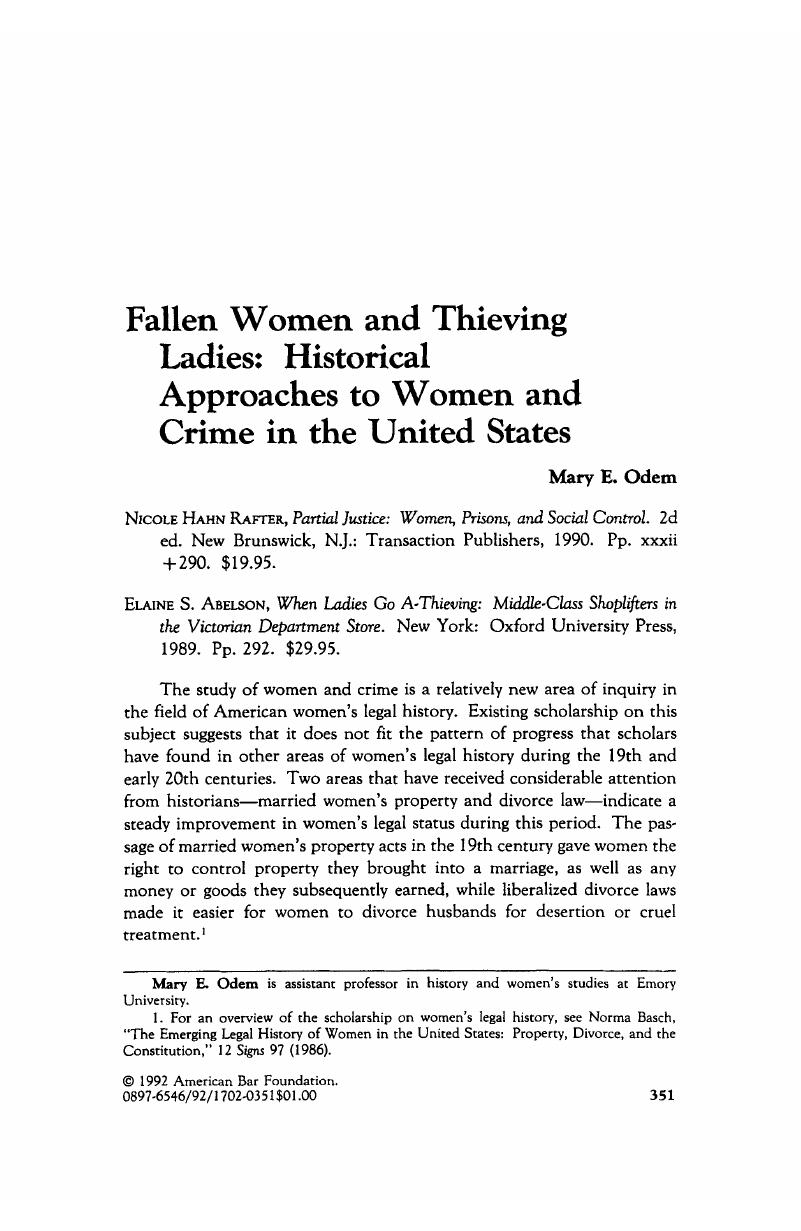Published online by Cambridge University Press: 27 December 2018

1 For an overview of the scholarship on women's legal history, see Norma Basch, “The Emerging Legal History of Women in the United States: Property, Divorce, and the Constitution,” 12 Signs 97 (1986).CrossRefGoogle Scholar
2 Barbara Meil Hobson, Uneasy Virtue: The Politics of Prostitution and the American Reform Tradition (Chicago: University of Chicago Press, 1990) (“Hobson, Uneasy Virtue”); Ruth Rosen, The Lost Sisterhood: Prostitution in America, 1900–1918 (Baltimore: Johns Hopkins University Press, 1982).Google Scholar
3 James C. Mohr, Abortion in America: The Origins and Evolution of National Policy (Oxford: Oxford University Press, 1978); Leslie J. Reagan, ‘About to Meet Her Maker’: Women, Doctors, Dying Declarations, and the State's Investigation of Abortion, Chicago, 1867–1940, 77 J. Am. Hist. 1240 (1991).Google Scholar
4 Hobson, Uneasy Virtue; Mary E. Odem, “Delinquent Daughters: The Sexual Regulation of Female Minors in the United States, 1880–1920” (doctoral diss., University of California, Berkeley, 1989).Google Scholar
5 For a different interpretation of the reformatory movement, see Estelle Freedman, Their Sisters' Keepers: Women's Prison Reform in America 1830–1930 (Ann Arbor: University of Michigan Press, 1984).Google Scholar
6 Freedman, Their Sisters' Keepers; Barbara Brenzel, Daughters of the State: A Social Portrait of the First Reform School for Girls in North America 1857–1905 (Cambridge, Mass.: MIT Press, 1983).Google Scholar